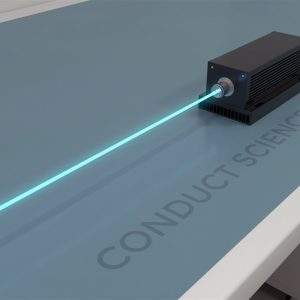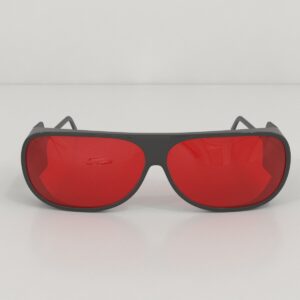$3,851.00 – $6,606.00Price range: $3,851.00 through $6,606.00
Digital Stereotaxic frame for mouse and rat with single of dual arms.
Designed for maximum precision and accuracy, the Conduct Science Digital Stereotaxic frame features an automated three-dimensional operating arm (X, Y, and Z axis) to provide a maximum reading accuracy of 0.01MM (10um) and travel range of 80mm. To ensure optimum long-term use, the operating arm replaces the traditional metal-to-metal “hard grinding” transmission with a combination of screw rod and rolling mechanisms to maintain the stability and accuracy of the coordinate axis over time. Molded transmission screws and thread sleeves and the use of connecting joints (rather than multiple joint connections) ensure stability and uniformity to reduce error in use.
This instrument comes with a set of mouse or rat adapters and a pair of ear bars.

Conduct Science is a premier manufacturer of research infrastructure, born from a mission to standardize the laboratory ecosystem. We combine industrial-grade precision with a scientist-led tech-transfer model, ensuring that every instrument we build solves a real-world experimental challenge. We replace "home-brew" setups with validated tools ranging from microsurgical suites to pathology systems. With a track record of >1,600 institutional partners and hundreds of citations, our equipment is engineered to minimize human error. We help you secure more data for less of your budget, delivering the reliability required for high-impact publication.



The Conduct Science Stereotaxic instrument uses landmarks on the surface of the animal’s skull (such as the Bregma ) as basic reference points and determines the position of a neural structure (brain region) through the directional movement of a three-dimensional manipulator arm. The device can then be used to perform injections, stimulations, impairment, guided positioning and other operations on the specific brain region . This device can also be used in conjunction with optogenetics, two-photon, endogenous brain imaging, fiber optic recording, electrophysiology and other systems.
The Conduct Science Stereotaxic frame utilizes anatomical landmarks on the surface of the animal’s skull, such as the bregma, lambda, sagittal suture, external auditory meatus, and tooth bar, to determine the X/Y/Z three-dimensional coordinates of functional brain areas beneath the cortex. The target region can then be reached through adjustment of X/Y/X axis using the main and vernier scales.
Triangular guide rails allow for quick positioning with universal contact points to facilitate lateral or longitudinal movement. The operating arms can be rotated at a certain angle from the bracket to facilitate the fixation of experimental animals.
The frame has been designed for optimum long-term use by replacing traditional metal-to-metal “hard grinding” transmission of the operating arm with a combination of screw rod and rolling mechanisms to maintain the stability and accuracy of the coordinate axis over time.
Molded transmission screws and thread sleeves and the use of connecting joints (rather than multiple joint connections) ensure stability and uniformity to reduce error in use.
Model | Species | Specification |
|---|---|---|
CS-STS-SM100D | Mouse | Single Arm |
CS-STS-SM200D | Mouse | Double Arm |
CS-STS-SR100D | Rat | Single Arm |
CS-STS-SR200D | Rat | Double Arm |
Specification | Result |
Operating arm axis movement | X, Y ,Z |
Operating arm movement | 360 degrees; Swinging Range: 180 degrees |
Reading accuracy | Manual model 0.1MM (100um), Digital Model 0.01MM (10um) |
Counting accuracy | ±0.01mm |
Vernier Propeller Accuracy | ±0.01mm |
Three dimensional propeller stroke | 80mm |
Reading method | Main and Vernier scales |
Movement Range | 80mm |
Positioning | One click to default (bregma) |
Dimensions | 350 × 250 × 340mm (L x W x H) |
Power Supply | 1.5V DC power supply, no electronic interference, suitable for electrophysiological experimental environments |
Composition | Metal alloy |
No. | Adaptor for Traumatic Brain Injury (TBI) | Model |
|---|---|---|
1 | Rotational Mouse Adaptor, 60°Ear Bars | CS-RMA-68065 |
2 | Rotational Rat Adaptor, 18°Ear Bars | CS-RMA-68063 |
3 | Optional Precise Rotational Adapter For Mouse | CS-PRMA-69100-03 |
4 | Optional Precise Rotational Adapter For Rat | CS-PRMA-69100-04 |
The three-dimensional operating arm is designed with a concentric directional transmission mechanism to maintain the consistency and accuracy of the transmission direction.
The operating arm replaces the traditional metal-to-metal “hard grinding” transmission (which wears fast) and adopts the combination of screw rod and rolling mechanism to maintain the stability and accuracy of the coordinate axis over time.
Key components such as transmission screws and thread sleeves are molded to ensure stability and uniformity when in use.
The use of connecting joints greatly reduces errors caused by multiple joint connections and improves stability.
The screw drive fixes the head, front teeth, nose bridge, and ear canal, which makes the adjustment smooth and precise, reducing the tedious operation steps of head fixation.
1. Brain Mapping
2. Lesion studies
3. Drug delivery
4. Electrophysiology
5. Gene therapy and viral vector delivery
6. Device implantation
7. Behavioural studies
8. Regenerative medicine
9. Traumatic Brain Injury (TBI) and Spinal Cord Injury (SCI) (see our impactor line)
10. Neuroplasticity Studies
11. Pain Research
12. Neurodegenerative Disease Models
13. Pharmacological Testing
Materials Needed:
Preparation:
Anesthesia:
Positioning:
Surgical Site Preparation:
Incision:
Locating Stereotaxic Coordinates:
Drilling:
After drilling, carefully puncture the dura mater with the fine needle of a medical syringe to avoid damage. If there is bleeding during this process, use a very small medical cotton ball to absorb the blood.
Implantation or Injection:
Sealing:
Recovery:
Post-Operative Care:
*Before conducting the formal drug injection, it is necessary to perform a pre-experiment to verify the accuracy of the localization of the target brain area. It is recommended to use tracer dyes such as DiI (detectable after 1 week), fluorescent gold dye (detectable after 2 weeks), or red or black dyes (detectable after 1 week). Then, take samples for frozen sectioning, and compare them with some reference points in the brain atlas to determine the accuracy of brain area localization (selecting larger and clearer reference points, such as the hippocampus, lateral ventricle, and optic chiasm nucleus, etc.).
Note: When sectioning, approach the target nucleus from the outside, and ensure that the angle of brain sections is consistent with the brain atlas.
| Weight | N/A |
|---|---|
| Dimensions | N/A |
| arm | Double, Single |
| species | Rat, Mouse |
You must be logged in to post a review.
There are no questions yet. Be the first to ask a question about this product.
Reviews
There are no reviews yet.